Transform Ontario’s wilderness while forging unforgettable connections with nature through volunteer forest service. From planting native seedlings alongside experienced rangers to conducting vital wildlife surveys, forest volunteers form the backbone of our conservation efforts. Whether you’re a weekend warrior or seeking a meaningful summer adventure, forest service volunteering offers hands-on opportunities to protect and preserve our precious woodland ecosystems.
Each year, dedicated volunteers contribute over 100,000 hours to Ontario’s forests, participating in essential tasks like trail maintenance, invasive species removal, and environmental education programs. These efforts not only help sustain our natural heritage but also provide volunteers with valuable field experience, outdoor skills, and a deeper understanding of forest ecology.
Join a passionate community of nature enthusiasts who are making a tangible difference in forest conservation. No prior experience is needed – just bring your enthusiasm, willingness to learn, and desire to be part of something bigger than yourself. Our comprehensive training programs ensure you’ll have the knowledge and skills to make a meaningful impact from day one.
Why Ontario’s Forests Need Your Help
Current Forest Health Challenges
Ontario’s forests face several pressing challenges that make volunteer efforts more crucial than ever. Invasive species threats like emerald ash borer and dog-strangling vine are damaging our native ecosystems, while climate change impacts on forests are creating new stresses on our beloved woodlands. Trees are struggling to adapt to changing rainfall patterns and increasingly extreme weather events.
Many forest areas need help with natural regeneration, especially in regions where deer populations are high or where invasive plants prevent native seedlings from thriving. Urban sprawl and development pressures are also creating new challenges, fragmenting wildlife corridors and reducing available habitat.
The good news? Every volunteer hour helps! Whether you’re planting trees, removing invasive plants, or helping with wildlife surveys, your contribution makes a real difference in keeping our forests healthy for future generations.
The Power of Volunteer Impact
In 2022 alone, Ontario’s forest volunteers contributed over 45,000 hours of service, equivalent to planting more than 100,000 trees and maintaining 500 kilometers of hiking trails. These dedicated individuals have helped restore critical wildlife habitats, with documented increases in bird and pollinator populations in restored areas.
Local success stories include the Oak Ridges Moraine project, where volunteers helped reduce invasive species by 60% over three years. At Algonquin Provincial Park, volunteer-led educational programs reached 15,000 visitors last year, fostering a deeper connection between people and nature.
Through citizen science initiatives, volunteers have tracked and documented over 200 species of plants and animals, providing valuable data for conservation efforts. Their work in erosion control has protected countless watershed areas, while their maintenance of hiking trails has improved accessibility for millions of annual visitors.
The ripple effect of volunteer work extends beyond the forest – every hour contributed helps preserve our natural heritage for future generations.
Getting Started as a Forest Service Volunteer
Available Programs and Opportunities
Ontario’s forests offer a wealth of volunteer opportunities for nature enthusiasts and conservation-minded individuals. Whether you’re a weekend warrior or looking for a longer-term commitment, there’s a program that’s perfect for you. The Ontario Parks Stewardship Program welcomes volunteers for activities ranging from trail maintenance to wildlife monitoring, making it easy to contribute to local conservation efforts.
For those interested in hands-on forest management, the Tree Planting Program runs every spring, offering volunteers the chance to help restore native species and create new habitats. The Citizen Science initiatives are perfect for nature lovers who enjoy hiking while collecting valuable data about forest health and wildlife populations.
Looking for a regular commitment? The Trail Ambassador Program lets you share your passion for nature while helping visitors navigate park trails and learn about forest ecosystems. During summer months, the Junior Naturalist Program needs volunteers to help educate young visitors about forest conservation through fun, interactive activities.
For photography enthusiasts, the Forest Watch Program combines volunteer work with wildlife photography, documenting seasonal changes and helping track forest health. Winter volunteers can join the Nordic Ski Patrol, maintaining trails and ensuring visitor safety during the snowy months.
Pro tip: Many programs offer training sessions and workshops, so don’t worry if you’re new to forest conservation – enthusiasm and dedication are the most important qualifications!
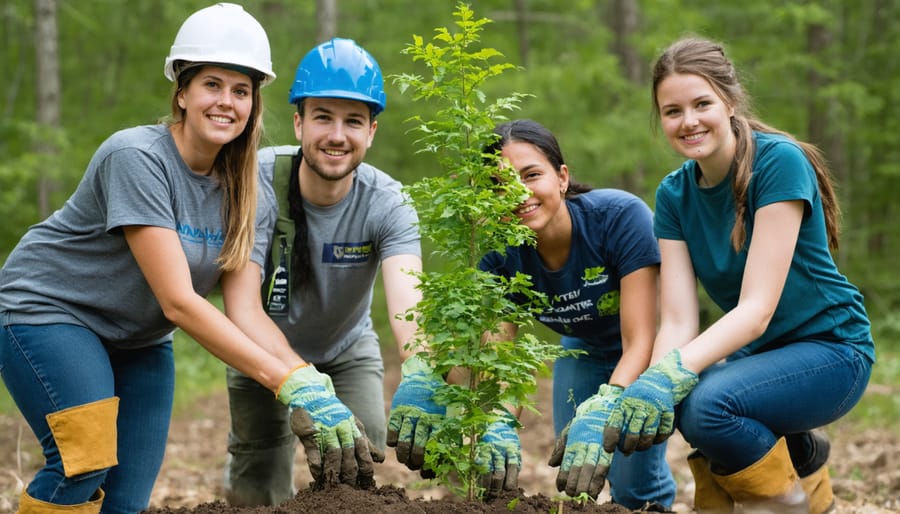
What to Expect on Your First Day
Arriving for your first day as a forest service volunteer is exciting, but it’s important to come prepared! Start your day early, as most volunteer activities begin around 8:00 AM to make the most of daylight hours. Wear sturdy, closed-toe boots and long pants – even in summer – to protect against thorns and poison ivy. Pack plenty of water, sunscreen, and insect repellent.
You’ll typically meet your volunteer coordinator at a designated gathering point, where you’ll receive a brief orientation and safety training. Don’t worry if you’re nervous – coordinators are used to working with newcomers and will guide you through everything you need to know.
Your first day might involve activities like trail maintenance, invasive species removal, or tree planting. Bring work gloves and dress in layers, as temperatures can vary significantly throughout the day. A small backpack with snacks, a rain jacket, and basic first aid supplies is also recommended.
Most volunteer sessions last 4-6 hours, including breaks. You’ll work alongside experienced volunteers who are usually happy to share their knowledge and stories. Take advantage of this opportunity to learn about local flora and fauna!
Remember to pace yourself and stay hydrated. Don’t hesitate to ask questions or request breaks when needed – the goal is to make a positive impact while staying safe and comfortable. By day’s end, you’ll likely be tired but satisfied, knowing you’ve contributed to preserving our precious forest ecosystems.
Hands-On Activities You’ll Love
Tree Planting and Forest Regeneration
Tree planting is one of the most rewarding and impactful activities you can participate in as a forest service volunteer. Each spring and fall, volunteers gather across Ontario to plant thousands of native seedlings, helping restore our precious forests one tree at a time.
As a volunteer, you’ll learn proper planting techniques from experienced foresters who’ll show you how to select ideal planting spots, prepare the soil, and ensure young trees have the best chance of survival. Don’t worry if you’re new to this – the techniques are easy to master with a bit of practice!
Typical planting sessions last 3-4 hours, during which you might plant anywhere from 25 to 50 seedlings. You’ll use simple tools like a planting shovel and dibble bar, while working alongside other nature enthusiasts. Remember to wear sturdy boots and bring water – this is a great workout!
Beyond traditional tree planting, volunteers also help with forest regeneration by removing invasive species, maintaining protective tree guards, and monitoring newly planted areas. During the summer months, you might assist in watering programs to help young trees survive dry spells.
Pro tip: If you’re new to tree planting, start with spring sessions when the soil is softer and more manageable. The cooler weather also makes the work more comfortable, and spring rains help give the seedlings a strong start.
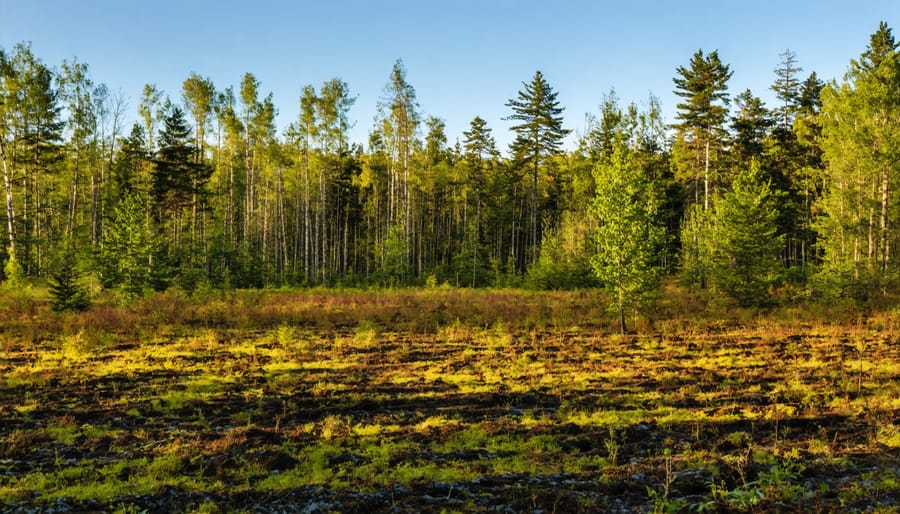
Trail Maintenance and Habitat Protection
Trail maintenance is one of the most hands-on ways volunteers can make a lasting impact on our forest ecosystems. From clearing fallen branches to repairing erosion damage, these essential tasks help keep our wilderness accessible while protecting delicate habitats. Volunteers often work in small teams, using basic tools like loppers, saws, and shovels to maintain clear pathways while being careful not to disturb surrounding vegetation.
A typical trail maintenance day might involve removing invasive species, building water bars to prevent erosion, or installing stepping stones across muddy areas. These improvements not only make trails safer for hikers but also help protect surrounding plant life from foot traffic wandering off designated paths.
Habitat protection goes hand in hand with trail work. Volunteers learn to identify sensitive areas, such as bird nesting sites or rare plant communities, and help create buffer zones around these locations. This might include installing educational signage, establishing natural barriers with fallen logs, or rerouting trails to reduce human impact on wildlife corridors.
One of the most rewarding aspects is seeing immediate results – a cleared trail, a restored streambank, or a protected wildflower meadow. Many volunteers say the satisfaction of knowing they’ve helped preserve these natural spaces for future generations keeps them coming back season after season.
Pro tip: While working on trails, keep an eye out for wildlife signs and native plants. It’s a great opportunity to learn about local ecosystems while contributing to their preservation!
Making It a Family Adventure
Volunteering in forest service becomes even more meaningful when shared with family members. It’s an excellent opportunity to teach children about environmental stewardship while creating lasting memories together. Pack a picnic lunch, bring your favorite outdoor games, and turn the day into an adventure that combines fun with purpose.
Consider assigning age-appropriate tasks to different family members. Younger children can help with seed collection or planting saplings, while teens might enjoy trail maintenance or wildlife habitat monitoring. Don’t forget to bring cameras or nature journals – documenting your family’s contributions can become a cherished tradition and inspire future generations of environmental stewards.
Make the experience educational by turning it into a nature scavenger hunt. Challenge your kids to identify different tree species, spot wildlife tracks, or collect interesting (non-living) natural objects. Many forest service programs offer educational materials specifically designed for families, including activity sheets and identification guides.
Remember to pace activities according to your family’s needs and abilities. Take regular breaks to explore, share snacks, and discuss what you’re learning together. Some families even create special traditions around their volunteer days, like wearing matching t-shirts or celebrating with a special meal afterward.
By involving children in forest conservation early, you’re not just helping the environment – you’re fostering a lifelong connection to nature and teaching valuable lessons about community service, responsibility, and environmental stewardship.
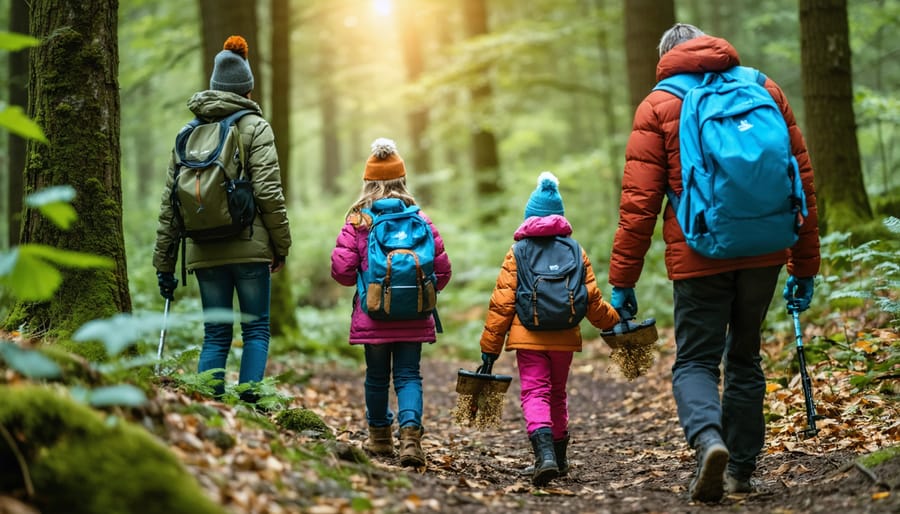
Your passion for our forests can make a real difference! Whether you have a few hours or several days to spare, there’s a perfect volunteer opportunity waiting for you. Ready to get started? Visit your local conservation authority’s website or contact the Ministry of Natural Resources and Forestry to explore current volunteering opportunities. You can also join local environmental groups and forest stewardship programs that regularly organize tree-planting events and conservation projects. Remember, every hour you dedicate helps preserve Ontario’s natural heritage for future generations. Don’t wait – take that first step today by signing up for an orientation session or attending an upcoming volunteer event. Together, we can protect and enhance our precious forest ecosystems while building lasting connections with nature and fellow nature enthusiasts.

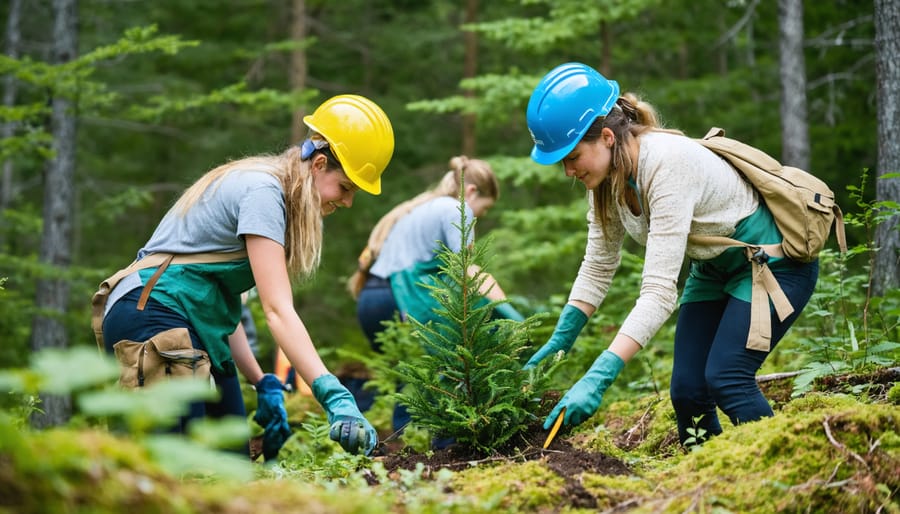

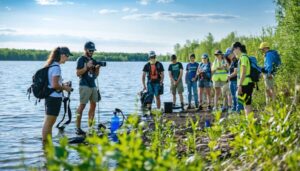

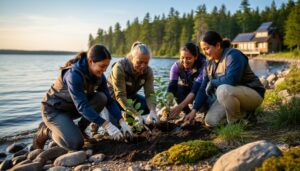


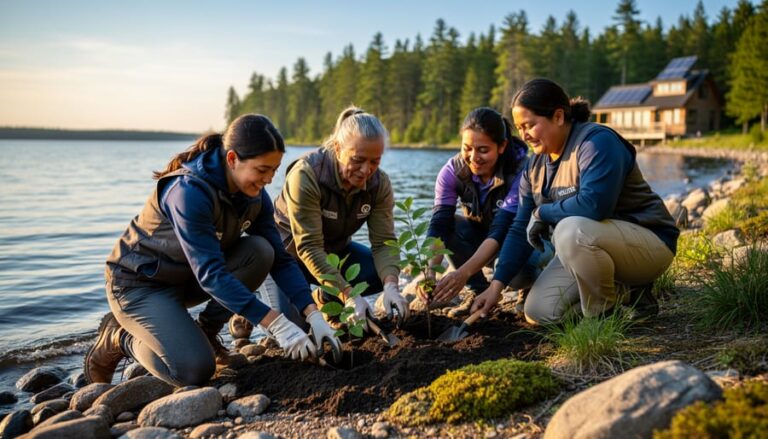



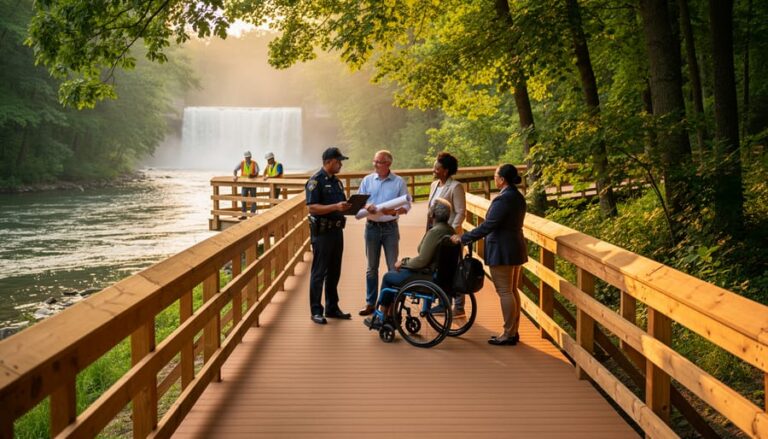

+ There are no comments
Add yours